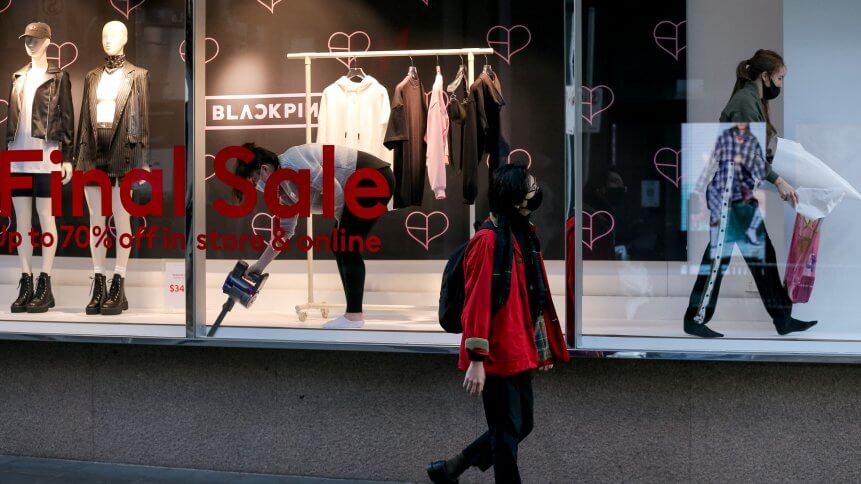Can Google and AI help retailers solve search abandonment?

With 70,000 searches every second, Google Search is the most used search engine globally. As it controls 90% of the global search engine market, organizations are looking at the best ways they can use AI and Search Engine Optimization (SEO) tools to appear on the top page of searches.
As SEO tools help businesses prioritize what users want, implementing AI to help improve search results is now being considered by more organizations. For eCommerce and retail operations, the insights resulting from customer search on their apps or websites can ensure not only that their products are available, but can also help improve the personalized shopping experience for customers.
However, search abandonment is a costly industry-wide issue industries are facing today. Similar to cart abandonment, customers have a low tolerance for bad search results, especially on retail websites. This not only impacts sales but also brand loyalty.
Amazon uses a combination of AI, computer vision, and data pulled from multiple sensors to ensure customers are only charged for the stuff they pick up in their stores. Cameras are used to track items as they’re taken from shelves. However, when it comes to online retail, its a different scenario.
According to research conducted by The Harris Poll and commissioned by Google Cloud, the amount of money lost to online retailers because the search function or search box did not provide consumers with the item they were looking for, is in excess of $333 billion each year in the US.
With 94% of consumers globally receiving search results that are not relevant to what they’re looking for on a retailers’ website, more than 4 in 5 global consumers end up viewing the brand differently as they feel it does not provide the desired shopping experience.
Creating the perfect search platform
Just as with any digital platform today, the user experience is paramount. Consumers want to have flexibility in getting to the products they want. The search option in any website has to be able to provide accurate results for any query entered. Some organizations are already looking to implement AI-based search options to help consumers complete their searches.
For Srikanth Belwadi, Group Product Manager at Google Cloud, providing quality search results is an industry-wide challenge. Having a customizable solution makes it easier for retailers to drive conversion, especially in helping shoppers get what they’re looking for faster.
As data from search analytics is key in decision making, for both consumers and retailers, Google Cloud’s Retail Search allows retailers to provide helpful search experiences including auto-complete, personalized results, and relevant promotions. Retail Search helps retailers and e-tailers understand consumer intent, and map it to product inventory with the help of machine learning-based search results.
“While traditional search platforms are keyword-based, Google’s semantic understanding of query intent enables retailers to dramatically improve experiences for customers with learning-based search. Retail Search helps get shoppers what they want faster, leading to higher conversion rates and happier consumers,” explained Srikanth.

Brandon Bell/Getty Images/AFP (Photo by Brandon Bell / GETTY IMAGES NORTH AMERICA / Getty Images via AFP)
AI in retail
Some of the retailers that have been using the new Google AI search tools include Macy’s. The department store chain has seen a reduction in search abandonment and also experience increasing conversion rates.
For furniture giant Ikea, the pandemic has altered consumer behavior and needs. Now, the company has improved its personalization shopping experience by implementing Google AI recommendation tools based on customer preference.
Recommendations AI models like ‘Recommended for you’, ‘Frequently Bought Together, and ‘Others you may like’ are coupled with business goals like optimizing for conversion rate, click-through rate, and revenue. We experimented with many different model combinations and custom rules. All this was easily configurable right in the GCP console.
One of the simplest custom configurations we used was to only recommend items that were in stock, and when items were out of stock we looked at similar items that were available to augment the experience,” said Albert Bertilsson, Head of Engineering, Edge at Ikea Retail.
The personalized search options and real-time recommendations saw Ikea increase relevant recommendations based on search by over 400%. The company is now looking to implement visual product search in the future to better improve the customer experience as well.
While Google Search would be considered the godfather of search engines, the eCommerce and retail industry is building upon the technology, and driven with automation coupled with AI and machine learning algorithms, is helping improve to search capabilities to help customers find what they want, and not to get lost doing it.










